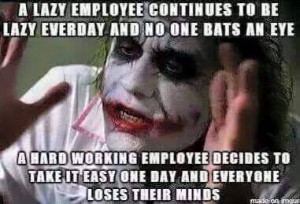How ‘on-call’ hours are hurting part-time workers
Category: Interesting Facts Leave a Comment

Lauri Wiberg | E+ | Getty Images
The Great Recession changed the American workplace. More and more jobs that used to be full time are now part time, with lower pay and limited or no benefits.
The number of “involuntary” part-time workers—people who want a full-time job but can’t find one or have had their hours cut back by their current employer—has nearly doubled since 2007. There were 8.1 million involuntary part-time workers in October, versus 4.3 million in October 2007, according to the latest figures from the Bureau of Labor Statistics.
“Using part-time workers increases flexibility and gives companies an ability to adjust to changing business conditions,” said Aparna Mathur, an economist at theAmerican Enterprise Institute in Washington. “Unless we see economic conditions improving, I think this trend will continue.”
In addition, the nature of part-time work has changed. At many companies, part-time means “on-call” with no fixed number of hours per week. It’s the equivalent of just-in-time inventory for the labor force.
“It’s an extremely abusive and unfair practice,” said Carrie Gleason, executive director of the Retail Action Project (RAP). “Part-time workers’ hours are constantly changing—and not just weekly, but sometimes on a daily basis.”
In a report released last year (Discounted Jobs: Home Retailers Sells Workers Short), RAP interviewed 436 retail workers in New York. Twenty percent of those surveyed said they must always or often be available for “call-in” shifts. More than a third said they were sometimes, often or always sent home early from work.
While extreme flexibility might be good for some businesses, it’s rough for employees to deal with constant uncertainty. They’ve basically become day labor and need to call in every day to find out if they have hours.
(Read more: McFail: McDonald’s dubious debt advice to employees)
“This has created tremendous instability for the retail workforce,” Gleason said. “It’s difficult to arrange for child care, to go to school or hold down a second job, which so many part-time workers desperately need.”
Always juggling your schedule
Akaisa O’Kieffe, a 21-year-old in Brooklyn, N,Y., wants a full-time job but can get only part-time hours at the Manhattan clothing store where she works.
Some weeks she works three days, some weeks only two. She always has a shift on Wednesday, but the other days float. And the schedule doesn’t get posted until Friday.
(Read more: Black Friday arrests at Wal-Mart wage protest)
The last-minute scheduling leaves this single mom with unpredictable paychecks and a constant scramble to find child care.
“It’s a real pain,” she said. “I honestly feel they’re taking advantage of us.”
It also isn’t easy looking for work when the schedule is different from week to week.
“The day you plan to look for a job is always the day they call you in to work, and so you can’t do it,” O’Kieffe said. “It’s ridiculous.”
Is this really good for business?
Many companies that could promote part-time workers to full time are not doing it because of the soft economy. With so many people desperate for work, management has the upper hand. If one part-time worker leaves, plenty of others are ready and willing.
Experts point out that just-in-time scheduling can have a downside for companies, too.
(Read more: Etsy nurtures America’s new micro-preneurs)
Tita Gray, a lecturer in the College of Business Administration at San Diego State University, said part-time workers can be a good thing when a company needs help with a specific project or emergency, but can create real problems if the workers are used simply to reduce costs.
“You have high turnover costs and you don’t build employee loyalty,” she said. “You have a workforce that for the most part does not care as much about the customer. So you may save money this way, but it’s detrimental to your customer base.”
Is this the new normal?
John Challenger, CEO of Challenger Gray & Christmas, the Chicago-based outplacement and career transitioning firm, believes we’ll see more of this.
“Companies, especially retailers, are looking for ways to bring in employees as they need them—to cover the traffic but not get caught with too many people standing around,” he said. “They want the ability to be able to staff up or down, depending on what happens.”
Challenger said there are now three levels of employment: full-time, part-time with specific shifts and on-call. And, he said, people move between them all the time.
“If you’re working as an on-call worker, you’re auditioning for a part-time or permanent job,” he said. “It’s better than an interview for a company. They can see how you work, how you fit in.”
Maybe so, but Gleason at RAP sees a darker side to the trend.
“Between being expected to have open availability, waiting by the phone for on-call shifts and being sent home early, retail workers are getting shortchanged by this industry,” she said.
Share the joy
























Recent Comments